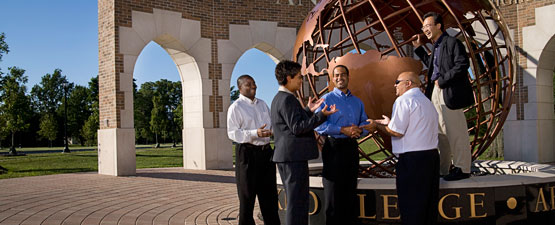Professional Dissertations DMin
Date of Award
2014
Document Type
Project Report
Degree Name
Doctor of Ministry
College
Seventh-day Adventist Theological Seminary
Program
Doctor of Ministry DMin
First Advisor
Benjamin D. Schoun
Second Advisor
James J. North, Jr.
Third Advisor
Rodney Mills
Abstract
Problem. By 2010, when this project began, the Elmhurst Seventh-day Adventist Church (ESDA) had 199 members (December 2009 clerk’s records). Yet ongoing, direct observation indicated that 122 of these (61%) were attending the church service fewer than six times per year. Only 66 of the members (33%) were attending at least once a month—a fact partially obscured by the routine presence of visitors. The underlying reasons for their regular absence remained unknown due to insufficient personal contact. As a result, it was not possible to define the kinds of meaningful ministry that would best serve the non-attending majority.
Method. Eight, non-attending, adult members of Elmhurst Seventh-day Adventist Church were interviewed using a survey instrument with 10 questions. Six of the interviews took place between May 3, 2012 and July 12, 2012 and two more were completed in December 2012 and June 2013. Following this, an intervention was implemented to address concerns stated in the interviews. This intervention included direct work with these eight individuals as well as specific adjustments in my personal ministry in this church. The intervention focused on getting non-attending members to take a proactive approach in creating and maintaining their own connection with the church. It also focused on listening, and conflict resolution. It sought to address limitations of the Dunbar Effect which led to the formation of mini prayer groups. In addition, it dealt with the personal church involvement of attending members (seeking to avoid the opposite extremes of burnout and inactivity). It also necessitated creating a system for tracking the attendance of individual members.
Results. From May 2012 through December 2013, two of the interviewees transferred to other churches. One completely discontinued attendance. Three now attend intermittently. One now normally attends fairly regularly (more than once per month). And another (who returned long before the interview) is reaching out to non-attending members himself. Insights gained through the interviews have helped to shape the way the church uses resources of time, money, and personnel. In the larger picture, as of May 2014, ESDA had 227 members (May 2014 clerk’s records). Of these, 123 (54%) attend fewer than six times per year. Eighty-eight (39%) attend at least once per month. This is partly due to some non-attending members returning to various levels of participation. It is also one result of a large influx of people from a neighboring congregation. These people were at a crossroads with their church attendance. Rather than becoming permanently, non-attending members of the neighboring church, they became a part of our congregation.
Conclusions. Ministry to non-attending members can be complicated and person-specific. This study suggests that certain ministry adjustments can make a significant difference. These adjustments include at least three areas. First, non-attending members can be helped to be proactive in their own spiritual condition. Second, certain, built-in limitations require a change in how time is used in ministry. Third, ongoing work with these people especially calls for compassionate listening and addressing conflict in positive ways.
Subject Area
Church attendance, Church membership
Recommended Citation
Hill, Glenn Paul, "Addressing Reasons for Members' Non-Attendance at the Elmhurst Seventh-day Adventist Church" (2014). Professional Dissertations DMin. 58.
https://dx.doi.org/10.32597/dmin/58/
https://digitalcommons.andrews.edu/dmin/58
Creative Commons License

This work is licensed under a Creative Commons Attribution-No Derivative Works 4.0 International License.
DOI
https://dx.doi.org/10.32597/dmin/58/



